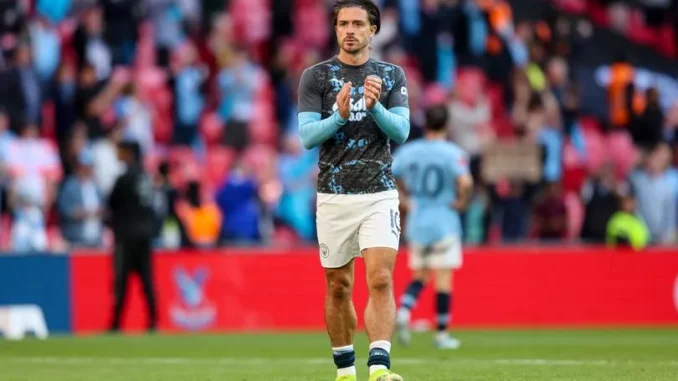
In the crucible of the FA Cup final, with Manchester City chasing a deficit against Crystal Palace, Pep Guardiola’s substitution choices sent shockwaves through the football world. Trailing 1-0, Guardiola called on Phil Foden and, stunningly, 19-year-old Claudio Echeverri, a debutant fresh from a loan at River Plate, leaving Jack Grealish rooted to the bench. The £100 million star, once Aston Villa’s talismanic captain, watched as his diminished role at City was laid bare. Wayne Rooney, a BBC pundit, captured the moment’s gravity: “If I was Jack Grealish, I’d be really concerned about my future at the football club, not getting on the pitch.” This snub, alongside swirling rumors of a return to Villa Park, has placed Grealish at a career-defining juncture.
Grealish’s 2021 move from Aston Villa to Manchester City for a British-record £100 million was a gamble on greatness. His trophy haul—three Premier League titles, a Champions League, an FA Cup, and more—proves he’s tasted success. Yet, his impact has waned. This season, Grealish, now 29, has notched just two goals and five assists in 26 appearances, with a meager 605 Premier League minutes. Guardiola’s faith in younger stars like Savinho, whose synergy with Erling Haaland has dazzled, and Echeverri’s surprise nod in the final, signal Grealish’s fall down the pecking order. “Savinho is in better form than Jack, and that’s why I played Savinho,” Guardiola said earlier this season, a rationale cemented by his Wembley choices. Grealish’s omission from Thomas Tuchel’s England squad for World Cup qualifiers against Albania and Latvia further dims his prospects.
Aston Villa, transformed under Unai Emery into a Champions League force, offers a potential lifeline. Their fourth-place finish last season and a £120 million European windfall fuel ambitions to bolster their squad. Grealish, who joined Villa at six, became captain in 2019, and led them back to the Premier League, remains a Villa Park icon. “It’s a club that is so close to my heart, and I definitely hope to go back there,” he said in 2021, evoking Ashley Young’s return after stints at Manchester United. A loan with an option to buy has been mooted, especially as Villa explores deals for City’s Kyle Walker and Kalvin Phillips to navigate Profit and Sustainability Rules (PSR). Grealish’s flair could fill the gap if Ollie Watkins, linked with Arsenal, departs, bringing creativity and leadership to Emery’s attack.
Yet, the path back is fraught. Grealish’s £300,000-per-week wages dwarf Villa’s top earner, Watkins, at £130,000, straining their PSR-compliant budget. His form—14 goals in 135 City appearances—and off-field incidents, like a publicized Newcastle night out, raise questions about his elite-level hunger. “He really has Villa mentality; this is why he’s struggling to perform for City,” one City fan posted online, echoing doubts about his fit in Emery’s high-intensity system. Villa’s careful financial strategy, balancing European ambitions with sustainability, makes a permanent deal risky, despite their Champions League revenue.
Rooney’s words crystallize Grealish’s dilemma: cling to a fading role at City or return to Villa, where he’s revered but must prove he’s no nostalgic gamble. Emery’s disciplined setup demands more than Grealish’s maverick flair, yet the chance to revive his career at a resurgent Villa is compelling. As the summer transfer window beckons, Grealish stands at a crossroads: chase the comfort of past glories or fight to reclaim his status as one of England’s finest. The Villa faithful await, but the ball is in Grealish’s court.
Leave a Reply